
With its superb back system, running vest-inspired pockets, and durable materials, this large walking day pack is a cut above the average. We liked the look of it so much that we've road tested it with two different reviewers; Rob Greenwood and Toby Archer give their verdicts here.
Ventilated back systems are nothing new, they've been around for years, but even with something so well established there's still room for improvement. Berghaus' new 3D Freeflow collection revisits the suspended back system genre with a fresh set of eyes, and does something different with the familiar format, improving on what's come before.
Rob:
The historic downside of ventilated back systems was that they pushed the weight away from your back, hence away from your centre of gravity, making them less comfortable - and less stable - to carry. In addition to that, the often curved design interfered with the amount of storage space inside the pack. Often they'd look quite large from the outside, only for the space to disappear once you actually opened them. Berghaus have remedied both of these issues, with the Freeflow system being quite close fitting and offering an impressive level of support and stability. If anything this fits and feels like a normal pack, only with the benefit - I find - of not getting anywhere near as sweaty.
Toby:
Standout feature is that Freeflow back, a suspended or 'trampoline' style back which means only a mesh sheet is against your back,with an air gap between that and the main body of the pack. Obviously the idea of this is to allow more air to get to your back, avoiding overheating and the unpleasantly soaked shirt-back syndrome. Berghaus has been making packs with Freeflow since 1996 so it's not a new idea, but with the 3D Freeflow they have made a number of refinements, including using a cleverly designed 3D printed mesh lumbar pad, that helps hold the suspended back away from the pack body whilst being air permeable and very comfy. But - if my experience is anything to go on - the suspended back system may not actually work as intended for everyone.
In Use
Rob:
The Freeflow 30+5L Pack is a versatile daypack with a larger capacity that's best suited towards hillwalking and trekking. During the time I've had it I've used it for just about everything.
Its size is such that it's got enough volume for bigger days out, perhaps even multi-day if you're staying in huts or hostels, or very disciplined about packing on a bivvy, but it equally has enough adjustment that you can cinch it down for shorter days. The Freeflow system definitely makes it more appropriate for the warmer months of the year - in winter it would probably feel a bit breezy. The absence of any lightweight mesh, and abundance of durable materials, means that it'd make a good pack for scrambling too - even if this isn't what it's primarily aimed at.
Something I particularly like about the Freeflow is that it's very efficient to use, with everything easily accessible, courtesy of its many pockets. On the front you've got space on the shoulders straps for two soft flask bottles (not supplied) and a zip pocket for a phone/GPS. On the hip belt are another two zipped pockets, which are ideal for on-the-go snacks. To the side of the pack are two pockets for bottles, although these double up as a good place to put poles too - or even stuff a spare layer. The large stash pocket on the front is perhaps the best place to put spare layers, with a waterproof or synthetic jacket often sitting in mine - particularly with the unpredictable weather we've been having (you never know when you'll need a shell).
Toby:
Berghaus have focused on maintaining the airflow without taking volume away from the pack itself by needing a pronounced curve in the pack like a traditional trampoline design. The 3D Freeflow is a success in this sense, and from the inside the back panel is essentially flat, meaning it's easy to pack and no volume is wasted. I've also found the 3D Freeflow a really comfy pack to carry with a decent amount of heavy climbing gear in it, or the essentials for an overnight backpacking trip. If there is a criticism from me it is that I'm unconvinced that the suspended back is any better at stopping me getting sweaty than any other design, and in this respect my experience is quite different to Rob's.
Although the back system is very comfy (that 3D printed lumbar pad is a thing of beauty!) I can't say it particularly works for me in terms of the intended air permeability. The material Berghaus has chosen for the suspended back is a very fine grade of mesh, with much smaller holes than the more netting-like material you tend to see on suspended-back packs. Although air permeable, it feels like it is pressing against the material of my t-shirt or base layer, and on warmer days I end up with a back as wet as I would with any other rucksack. I've never been convinced that suspended-back rucksacks of any design work particularly well for me, but with those that use a more 'open' mesh I do get either a bit less sweaty, or at least my back dries out sooner. But I accept that this is a very individual thing and my physiology just means I sweat a lot when I exercise. Let's remember that Rob has got on so much better with the same back system! If your constitution likewise tends towards the serenely un-hot and bothered, than the 3D Freeflow may well be the perfect pack for you, ensuring you don't break into a 'back sweat' even on the steepest of slopes and the muggiest of evenings.
Features
Rob:
For me the back system is, without doubt, the star of the show. The mesh they've used offers a high level of breathability (I would say!) allowing air to flow through, whilst absorbing very little moisture - hence it dries very, very quickly. Unusually for a day pack the system is also fully adjustable, so you can shift the size between small and large. This is a unisex model that should suit a wide range of users.
Whilst it's not the lightest pack, the 3D Freeflow has an absolutely bombproof feel. It's worth noting the absence of stretchy mesh throughout and the reason for that is that Berghaus looked at their returns and analysed what wore out - and the first thing (more often than not) was the mesh. As a result, they've shifted to a high wear material where you'd usually expect the mesh to be - namely the pockets at the side of the pack, and the additional storage pouch on the front. The only exception to this are the soft flask bottle holders, since these are in a less vulnerable position on the shoulders.
Another feature which I like is the way in which the main compartment is constructed, with a large opening, making it easy to pack and search through. You also have the ability to extend the pack's volume by unzipping a 5L compartment on the front. This is a separate space from the rest of the pack, with its own access, which has its pros and cons. I'm divided about it, as the zip accessing that storage is quite small, and the fact it's separate from the rest of the pack may mean you can't always fit what you want in it - whereas if it had been lumped in with the rest of the storage it might have been a bit more useful.
It also features an integrated rain cover at the base of the pack, which I've used more than I anticipated, given how wet it's been this year!
Toby:
Beyond the back system, the 3D Freeflow 30+5L is a modern design, a zip-access pack that takes a number of cues from running packs and the lightweight backpacking world, such as pockets on the hipbelt and shoulder straps, those stash pockets on the sides and front, and a way to stow hiking poles temporarily when you need your hands, without taking the pack off your back.
I like the large main compartment accessed via a wide-opening zip that makes it easy to pack and unpack. There is a smaller, top zipped pocket for valuables or smaller items that also has a key clip in it. Finally there is another pocket accessed either from inside or outside. I haven't used this "+5" bellows expansion on day hikes and overnight trips but see it could be stuffed with things like dehydrated food packets and might expand the pack for slightly longer trips, or could be a place to stuff winter extras like mitts and spare gloves.
The 3D Freeflow is compatible with hydration bladders and works well with them, although I prefer to carry water in soft flasks in the shoulder pockets. I've tried those pockets both with 500ml Inov8 water bottles I've had for years that are oval in design, and round profile Smart Water bottles, and both shapes fit. The right strap pocket has a second zip pocket, but I've found with a 500ml bottle in the main pouch it's very hard to fit anything in that smaller zipped pocket.
Berghaus say the pack weighs 1408g, but my scales state 1516g - a big enough discrepancy to make me go through the numerous pockets of the pack to see if I had left something in one of them. So, unless Berghaus didn't include the detachable waterproof cover (which the pack comes with and has its own little hideaway pocket), I'm not quite sure why my pack is over 100g heavier than they think. Despite the nod to lightweight "thrupacking" and ultra-running designs, this is not a lightweight pack. Without the 3D Freeflow back system, I imagine this pack would be very significantly lighter. So whether the relative extra weight and bulk is worth it to a potential user may depend on how successful they find the back system.
Summary
Rob:
I rate the 3D Freeflow 30+5L on several levels. The first is the back system and the level of comfort and support it provides, as well as the brilliant airflow it offers to make you feel less sweaty. The other aspect I've appreciated has been the way in which it's constructed, both in terms of how efficient it is to use, and how long I think it will last. The absence of mesh on the sides is a nice touch and it's got a good, durable feel as a result of this. There has to be a downside to all this, and perhaps it's no surprise that the catch here is the price. At £180 it definitely sits at the premium end of the spectrum, although this is fair enough for a pack with a distinctly premium feel.
Toby:
Overall, the 3D Freeflow 30+5L is a hiking pack that's easy to like, with lots of smart little features that you really appreciate when out and about. The suspended back system is well designed not to limit the volume of the pack and still maintain that air space between the user's back and the pack itself. The 3D printed lumbar pad is a great idea that works really well too - I think we might see other makes doing something similar in the future. But, for me at least, I'm not fully convinced that the mesh of the suspended back is the optimal choice of material to avoid me getting the dreaded soggy shirt back issue. In that respect my experience has been different to Rob's.
















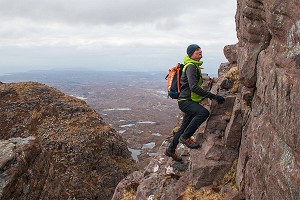
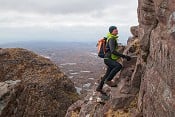
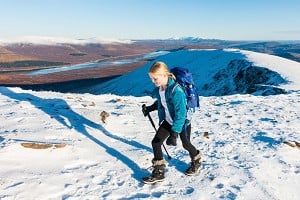
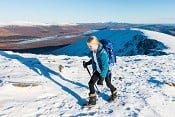









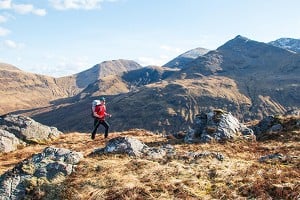
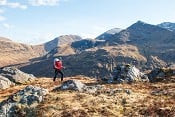
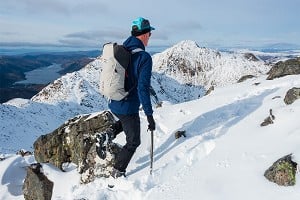
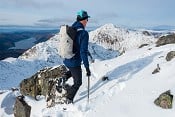
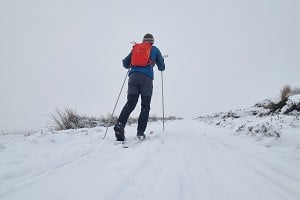
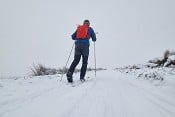
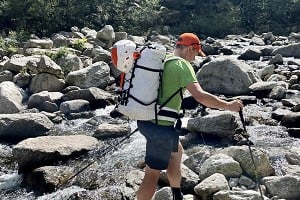
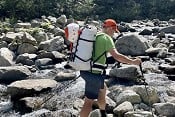
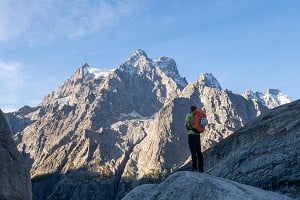
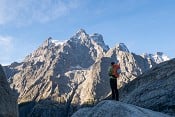
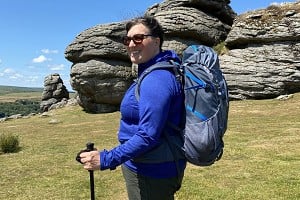
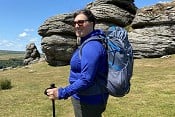
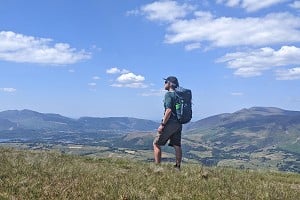
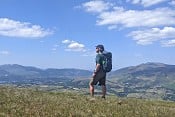
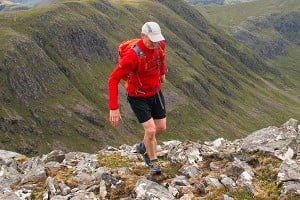
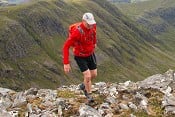

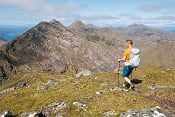
Comments